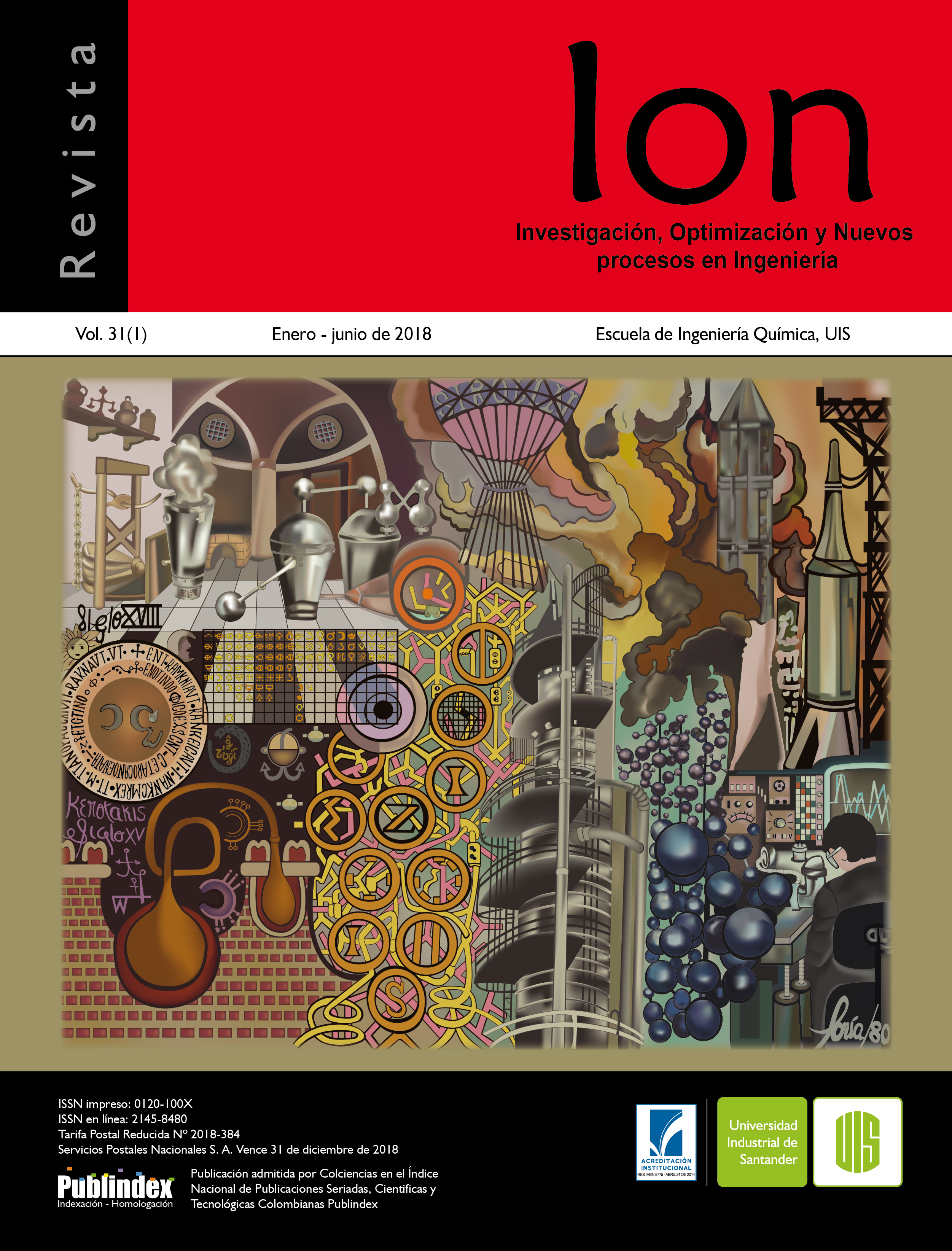Effect of particle size in the reduction of lateritic Ni ore in a Linder reactor
Published 2018-09-28
Keywords
- Lateritic mineral,
- Rotary kiln,
- Direct reduction,
- particle size,
- Linder reactor
- Nickel ...More
How to Cite
Abstract
Colombia possesses Nickel ore in the highlands of the San Jorge region, south of the department of Cordoba. The material extracted from the area is processed by means of calcination and fusion in a Rotary Kiln and an Electrical Arc Furnace EAF respectively to obtain the Ferronickel. During the crushing, drying, and calcination of the mineral within the Rotary Kiln, fine ore particles that contain Fe and Ni are produced; these fine particles must be agglomerated and then returned to the furnace for calcination. Inside the furnace, the size of the material and the velocity of the gases, limits the efficiency of the process, where particles less than 2 mm do not calcine and is expelled from the furnace. The present work analyses the influence of particle size of a lateritic mineral of nickel, submitted to reduction in a Linder reactor, using two particle size distributions; a conventional sample for reduction test and another fine. The materials were dried and then reduced at a temperature of 950°C, with coal as a reductive agent. It was found that the loss of mass due to the particle size was not relevant and the decrease of particle size improves the concentration of the desired material, optimizing the recuperation of Fe and Ni during the reduction stage.
Downloads
References
[2] Wills BA. Mineral processing technology. Processing of ore and mineral recovery. Mexico: Limusa Editorial; 1994.
[3] Medina FA. Capacity assessment pelletizing iron ore _nes from Topaip and Tibirita and reducibility test response in the furnace Linder (graduation project). Tunja, Colombia: Universidad Pedagógica y Tecnológica de Colombia; 2002.
[4] Guatibonza R, Forero Pinilla A, Pérez Villamil FR. Design, construction and assembly of a reactor type Linder, for testing laboratories reducibility Paz Del Rio S.A. (master thesis). Tunja, Colombia: Universidad Pedagógica y Tecnológica de Colombia; 2005.
[5] Soto Gutierrez JF. Study of lateritic ore reducibility from Cerro Matoso S.A. (graduation project). Tunja, Colombia: Universidad Pedagógica y Tecnológica de Colombia; 2002.
[6] Mejía-A VM, Durango JR. Geology of the Cerro Matoso nickel laterites of S.A. Cordoba, Colombia; 1983.
[7] Hernández Y, Cogollo R, Almanza O. Characterization of clay nickel samples ore from the Cerro Matoso (Crdoba - Colombia). Colombian physics journal. 2006;38:285-8.
[8] Fernández and Miranda. Mechanical preparation of ores and coals. Spain: Dossat editorial S.A; 2015.
[9] Zhu DQ, Cui Y, Vining K, Hapugoda S, Douglas J, Pan J, Zheng GL. Upgrading low nickel content laterite ores using selective reduction followed by magnetic separation. International Journal of Mineral Processing. 2012;106- 109:1-7.
[10]Huang Z, Yi L, Jiang T. Mechanisms of strength decrease in the initial reduction of iron ore oxide pellets. Powder Technology. 2012;221:284-6.
[11] Li J, Li X, Hu Q, Wang Z, Zhou Y, Zheng J, Liu W, Li L. Effect of pre-roasting on leaching of laterite. Hydrometallurgy. 2009;99:85-7.
[12] Jiang M, Sun T, Liu Z, Kou J, Liu N, Zhang S. Mechanism of sodium sulfate in promoting selective reduction of nickel laterite ore during reduction roasting process. International Journal of Mineral Processing. 2013;123:32-5.
[13]Valix M, Cheung WH. Study of phase transformation of laterite ores at high temperature. Minerals Engineering. 2002;15:608-12.
[14]Africano Higuera D, Pineda Triana Y. Optimization of quantitative analytical method XRF team MiniPal 2 for characterization of nickel laterite (graduation project). Tunja, Colombia: Universidad Pedagógica y Tecnológica de Colombia; 2011.
[15]Lin HY, Chen YW, Li C. The mechanism of reduction of iron oxide by hydrogen. Thermochimica Acta, 2003;400(1-2):61-7.
[16]Unidad de Planeación Minero Energética – UPME, Mines and Energy Ministry. Mining and Energy Planning Unit, Colombian nickel. Bogota, Colombia; 2009.
[17]Li B, Wang H, Wei Y. The reduction of nickel from low-grade nickel laterite ore using a solid-state deoxidization method. Minerals Engineering. 2012;24(14):1556-62.

